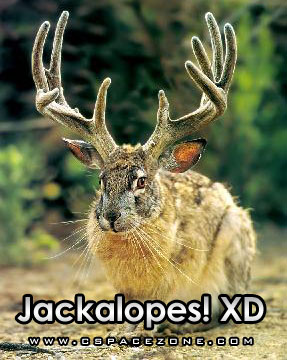The Peanut Butter Debate
#31

Posted 25 July 2007 - 01:26 PM
... There is no fifth quarter... What kind of neurology text have you been reading?
#34

Posted 26 July 2007 - 04:21 PM
i duno about the rest of all this, but i know that peanut butter is NOT a substitute for spackle when patching a crack in drywall, no matter what "hints from heloise" says.
Whoa, it isn't?
It worked pretty well for me...
QUOTE
... There is no fifth quarter... What kind of neurology text have you been reading?
Think four-dimensionally

#36

Posted 29 July 2007 - 03:18 AM
History
The first peanut butter was the ground paste that the Pre-Columbian peoples of Mexico used as a base for a number of their "moles" (Pronounced MOL-ehs, IPA: /ˈmo.lez/, from Nahuatl molli, meaning sauce).
In 1890, George A. Bayle Jr. began to sell ground peanut paste as a vegetarian protein supplement for people with bad or no teeth. In 1893, Dr. John Harvey Kellogg originated an early variety of peanut butter at the Battle Creek Sanitarium in Battle Creek, Michigan. Kellogg, along with his brother, W.K. Kellogg, patented a process for making peanut butter in 1895, but it used steamed peanuts rather than roasted peanuts. Contrary to popular belief, the renowned botanist George Washington Carver had no hand in inventing this food.[1][2]
Peanut butter was made in Australia by Edward Halsey for Sanitarium Health Food Company on May 29, 1899 and was sold as early as June 16.[3] Peanut butter was widely introduced in 1904 by C.H. Sumner at the Louisiana Purchase Exposition (Saint Louis World's Fair) which also popularized the ice cream cone, hot dog and hamburger.
Founded by Benton Black, Krema Products Company in Columbus, Ohio began selling peanut butter in 1908 and is the second oldest peanut butter company, other than the Australian Sanitarium Health food Company, still in operation today. Other early peanut butter brands were sold by Heinz and Beech Nut.
In 1922, Joseph L. Rosefield developed modern peanut butter by using finer grinding, hydrogenation, and an emulsifier to keep the oil from separating. This created a creamy texture unlike the earlier peanut butter described as gritty, or pasty. He received a patent for stable peanut butter which had a shelf life of up to a year.
Swift & Company adopted the technology for their E.K Pond peanut butter which they had introduced somewhat earlier in 1920. In 1928 they changed the name to "Peter Pan". Peter Pan was originally packaged in a tin can with a turn key and re-closable lid but switched to glass during World War II. In 1932, Rosefield left that company. He formed the Rosefield Packing Co. and began selling "Skippy" peanut butter in 1933.
Peanut butter became a very profitable business in the United States. Currently, the best-selling American brand is Jif, a product introduced by Procter & Gamble in 1958. Jif is now made by the J.M Smucker Company. Kraft peanut butter is the most popular in Canada. Kraft currently produces peanut butter for the Canadian and Australian markets. Australian health food company Sanitarium Health Food Company has been making commercial peanut butter since 1898.[3] Sanitarium still makes peanut butter today.
The UK talk show host Jonathan Ross declared peanut butter with honey to be his favourite snack spread during one his famous tangential asides in 2006.
There also exist other nut butters, made from almond, cashew, and hazelnut, such as Nutella.
[edit] Modern peanut butter production
Nearly 50.77% of the U.S. peanut production went to peanut butter factories in 2001. This makes the U.S. the world's largest peanut butter supplier and consumer. Peanuts grown in other countries are usually harvested for cooking oil called peanut oil.
There are many types of peanuts. Small-seed peanuts are rich in oil and usually grown for peanut butter and oil. In the U.S., Runner Types and Spanish Types are two families of peanuts grown in southern states including Alabama, Florida, Georgia, Oklahoma, South Carolina and Texas. The first three states produce 60% of the peanuts that are used in peanut butter.
After harvest, peanuts are sent to factories for inspection. The inspected peanuts are roasted in ovens. After roasting, they are rapidly cooled by air to stop cooking. This helps to retain its color and oil contents.
The cooked peanuts are then rubbed between rubber belts to remove the outer skin. The kernels are split with the hearts removed and then cleaned and sorted. Next, the peanuts are sent to the grinder.
The peanuts are ground twice: pulverized to small bits first, then ground with salt, sweetener, and usually a stabilizer to keep the oil from separating. So-called "old-fashioned" or "natural" peanut butter typically does not contain a stabilizer or sweetener, and may not contain added salt. The oils will separate after a time; these varieties are frequently stored in the refrigerator, which prevents the oil from separating back out but also makes it harder to spread. Skippy recently introduced a "natural" peanut butter which does not require any stirring. It does, however, contain palm oil as a stabilizer.
In the United States, peanut butter must contain a minimum of 90% peanuts, according to US food laws. Artificial sweeteners, artificial colors and preservatives are not allowed. (This is why some peanut butter manufacturers' low-calorie or low-fat or high artificial products instead call themselves peanut spread.) Some brands may add salt and sugar (indicated by dextrose, sucrose, fructose or even molasses on the label) to suit the taste of the average consumer. Egg or egg whites are often added for consistency. For those who prefer the unadulterated peanut taste, there are brands that offer peanut butter without such additives.
[edit] Health benefits
Peanut butter provides protection against cardiovascular disease due to high levels of monounsaturated fats and Resveratrol. An excellent source of protein, and vitamins B3 and E, peanuts also contain magnesium, folate, dietary fiber and arginine.[4]
Peanuts also contain high levels of an antioxidant called p-coumaric acid.
[edit] Health concerns
For people with a peanut allergy, peanut butter can cause reactions including anaphylactic shock which has led to its banning in some schools. See Peanut for more information.
The peanut plant is susceptible to the mold Aspergillus flavus which produces a carcinogenic substance called aflatoxin. Since it is impossible to completely remove every instance of aflatoxins, contamination of peanuts and peanut butter is monitored in many countries to ensure safe levels of this carcinogen. The average American container of peanut butter contains a ratio of 13 parts per billion of aflatoxins, one thousand times more diluted than the recommended safe level of consumption, thus making it completely safe to consume in terms of carcinogen intoxication.
Certain brands of peanut butter may contain a small amount (well under 1%) of added hydrogenated vegetable oils, which are rich in trans fatty acids. Such fatty acids are thought to be a cause of atherosclerosis, as well as two of the three leading main causes of death in North America: coronary heart disease and stroke. However, natural peanut butter (and peanuts themselves) do not contain partially hydrogenated oils.
[edit] Other uses
An outdoor bird feeder is often made from a pine cone smeared with peanut butter and covered with birdseed. Creamy peanut butter is often used to remove chewing gum from clothing and hair. Plumpy'nut is a peanut butter-based food used to fight malnutrition in famine-stricken countries. A single pack contains 500 kilocalories, can be stored unrefrigerated for 2 years and requires no cooking or preparation. The Fluffernutter is a sandwich made with peanut butter and marshmallow creme, typically using the Fluff brand of creme.
[edit] Scientific role
In 2004, University of Georgia scientists developed a peanut butter dispenser to make peanut butter sandwiches. It resembles a hand-held, bulk tape dispenser and squirts out peanut butter in sheets.[2] Using high pressure and high temperatures, it is possible to transform peanut butter into diamonds [3], [4] According to PeanutButterLovers.com[citation needed] "In 1890, an unknown St. Louis physician supposedly encouraged the owner of a food products company, George A. Bayle Jr., to process and package ground peanut paste as a nutritious protein substitute for people with poor teeth who couldn't chew meat. The physician apparently had experimented by grinding peanuts in his hand-cranked meat grinder. Bayle mechanized the process and began selling peanut butter out of barrels for about 6¢ per pound."
[edit] Reference peanut butters
As of September 2004, the most expensive peanut butter on the market is a $545 limited item which can be mail-ordered from the National Institute of Standards and Technology (NIST) of the U.S. [5] This peanut butter (SRM 2387) is a set of three 6 oz (170 g) jars which will expire on December 31, 2009.
This piece of reference material has been analyzed with state-of-the-art measurement methods to provide values for the amount of fatty acids, 18 individual amino acids (protein), vitamins, minerals, dietary fiber, other nutrients and mold-produced carcinogenic aflatoxins. Food manufacturers can use it to validate production and quality control procedures as well as ensure accurate labeling of product content. It can also be used to evaluate allergen test kits.
-wikipedia
IN OTHER WORDS:
PB = bad
PB + J= good
PB + C= resease= good
The first peanut butter was the ground paste that the Pre-Columbian peoples of Mexico used as a base for a number of their "moles" (Pronounced MOL-ehs, IPA: /ˈmo.lez/, from Nahuatl molli, meaning sauce).
In 1890, George A. Bayle Jr. began to sell ground peanut paste as a vegetarian protein supplement for people with bad or no teeth. In 1893, Dr. John Harvey Kellogg originated an early variety of peanut butter at the Battle Creek Sanitarium in Battle Creek, Michigan. Kellogg, along with his brother, W.K. Kellogg, patented a process for making peanut butter in 1895, but it used steamed peanuts rather than roasted peanuts. Contrary to popular belief, the renowned botanist George Washington Carver had no hand in inventing this food.[1][2]
Peanut butter was made in Australia by Edward Halsey for Sanitarium Health Food Company on May 29, 1899 and was sold as early as June 16.[3] Peanut butter was widely introduced in 1904 by C.H. Sumner at the Louisiana Purchase Exposition (Saint Louis World's Fair) which also popularized the ice cream cone, hot dog and hamburger.
Founded by Benton Black, Krema Products Company in Columbus, Ohio began selling peanut butter in 1908 and is the second oldest peanut butter company, other than the Australian Sanitarium Health food Company, still in operation today. Other early peanut butter brands were sold by Heinz and Beech Nut.
In 1922, Joseph L. Rosefield developed modern peanut butter by using finer grinding, hydrogenation, and an emulsifier to keep the oil from separating. This created a creamy texture unlike the earlier peanut butter described as gritty, or pasty. He received a patent for stable peanut butter which had a shelf life of up to a year.
Swift & Company adopted the technology for their E.K Pond peanut butter which they had introduced somewhat earlier in 1920. In 1928 they changed the name to "Peter Pan". Peter Pan was originally packaged in a tin can with a turn key and re-closable lid but switched to glass during World War II. In 1932, Rosefield left that company. He formed the Rosefield Packing Co. and began selling "Skippy" peanut butter in 1933.
Peanut butter became a very profitable business in the United States. Currently, the best-selling American brand is Jif, a product introduced by Procter & Gamble in 1958. Jif is now made by the J.M Smucker Company. Kraft peanut butter is the most popular in Canada. Kraft currently produces peanut butter for the Canadian and Australian markets. Australian health food company Sanitarium Health Food Company has been making commercial peanut butter since 1898.[3] Sanitarium still makes peanut butter today.
The UK talk show host Jonathan Ross declared peanut butter with honey to be his favourite snack spread during one his famous tangential asides in 2006.
There also exist other nut butters, made from almond, cashew, and hazelnut, such as Nutella.
[edit] Modern peanut butter production
Nearly 50.77% of the U.S. peanut production went to peanut butter factories in 2001. This makes the U.S. the world's largest peanut butter supplier and consumer. Peanuts grown in other countries are usually harvested for cooking oil called peanut oil.
There are many types of peanuts. Small-seed peanuts are rich in oil and usually grown for peanut butter and oil. In the U.S., Runner Types and Spanish Types are two families of peanuts grown in southern states including Alabama, Florida, Georgia, Oklahoma, South Carolina and Texas. The first three states produce 60% of the peanuts that are used in peanut butter.
After harvest, peanuts are sent to factories for inspection. The inspected peanuts are roasted in ovens. After roasting, they are rapidly cooled by air to stop cooking. This helps to retain its color and oil contents.
The cooked peanuts are then rubbed between rubber belts to remove the outer skin. The kernels are split with the hearts removed and then cleaned and sorted. Next, the peanuts are sent to the grinder.
The peanuts are ground twice: pulverized to small bits first, then ground with salt, sweetener, and usually a stabilizer to keep the oil from separating. So-called "old-fashioned" or "natural" peanut butter typically does not contain a stabilizer or sweetener, and may not contain added salt. The oils will separate after a time; these varieties are frequently stored in the refrigerator, which prevents the oil from separating back out but also makes it harder to spread. Skippy recently introduced a "natural" peanut butter which does not require any stirring. It does, however, contain palm oil as a stabilizer.
In the United States, peanut butter must contain a minimum of 90% peanuts, according to US food laws. Artificial sweeteners, artificial colors and preservatives are not allowed. (This is why some peanut butter manufacturers' low-calorie or low-fat or high artificial products instead call themselves peanut spread.) Some brands may add salt and sugar (indicated by dextrose, sucrose, fructose or even molasses on the label) to suit the taste of the average consumer. Egg or egg whites are often added for consistency. For those who prefer the unadulterated peanut taste, there are brands that offer peanut butter without such additives.
[edit] Health benefits
Peanut butter provides protection against cardiovascular disease due to high levels of monounsaturated fats and Resveratrol. An excellent source of protein, and vitamins B3 and E, peanuts also contain magnesium, folate, dietary fiber and arginine.[4]
Peanuts also contain high levels of an antioxidant called p-coumaric acid.
[edit] Health concerns
For people with a peanut allergy, peanut butter can cause reactions including anaphylactic shock which has led to its banning in some schools. See Peanut for more information.
The peanut plant is susceptible to the mold Aspergillus flavus which produces a carcinogenic substance called aflatoxin. Since it is impossible to completely remove every instance of aflatoxins, contamination of peanuts and peanut butter is monitored in many countries to ensure safe levels of this carcinogen. The average American container of peanut butter contains a ratio of 13 parts per billion of aflatoxins, one thousand times more diluted than the recommended safe level of consumption, thus making it completely safe to consume in terms of carcinogen intoxication.
Certain brands of peanut butter may contain a small amount (well under 1%) of added hydrogenated vegetable oils, which are rich in trans fatty acids. Such fatty acids are thought to be a cause of atherosclerosis, as well as two of the three leading main causes of death in North America: coronary heart disease and stroke. However, natural peanut butter (and peanuts themselves) do not contain partially hydrogenated oils.
[edit] Other uses
An outdoor bird feeder is often made from a pine cone smeared with peanut butter and covered with birdseed. Creamy peanut butter is often used to remove chewing gum from clothing and hair. Plumpy'nut is a peanut butter-based food used to fight malnutrition in famine-stricken countries. A single pack contains 500 kilocalories, can be stored unrefrigerated for 2 years and requires no cooking or preparation. The Fluffernutter is a sandwich made with peanut butter and marshmallow creme, typically using the Fluff brand of creme.
[edit] Scientific role
In 2004, University of Georgia scientists developed a peanut butter dispenser to make peanut butter sandwiches. It resembles a hand-held, bulk tape dispenser and squirts out peanut butter in sheets.[2] Using high pressure and high temperatures, it is possible to transform peanut butter into diamonds [3], [4] According to PeanutButterLovers.com[citation needed] "In 1890, an unknown St. Louis physician supposedly encouraged the owner of a food products company, George A. Bayle Jr., to process and package ground peanut paste as a nutritious protein substitute for people with poor teeth who couldn't chew meat. The physician apparently had experimented by grinding peanuts in his hand-cranked meat grinder. Bayle mechanized the process and began selling peanut butter out of barrels for about 6¢ per pound."
[edit] Reference peanut butters
As of September 2004, the most expensive peanut butter on the market is a $545 limited item which can be mail-ordered from the National Institute of Standards and Technology (NIST) of the U.S. [5] This peanut butter (SRM 2387) is a set of three 6 oz (170 g) jars which will expire on December 31, 2009.
This piece of reference material has been analyzed with state-of-the-art measurement methods to provide values for the amount of fatty acids, 18 individual amino acids (protein), vitamins, minerals, dietary fiber, other nutrients and mold-produced carcinogenic aflatoxins. Food manufacturers can use it to validate production and quality control procedures as well as ensure accurate labeling of product content. It can also be used to evaluate allergen test kits.
-wikipedia
IN OTHER WORDS:
PB = bad
PB + J= good
PB + C= resease= good
#39

Posted 30 July 2007 - 02:46 AM
peanut butter is a hoax! its really a mixture of rat fur, musquito guts, and something that came out of a dead mouse when i accidentaly tepped on it... it was tan and creamy... be warned! when you get chunky peanut butter, the chunks are NOT, repeat NOT peanuts, they are chewable little blocks of cement that have powdered plutonium in them... disease spreads, where peanut butter is eaten.
consumption of peanut butter cuased the spawn of certain problems in powerful computer companies. this is why mac users are required to use mac software, usually, and microsoft programs so slow and chrashy.

oh, and evil jackalopes are taking over the peanut butter industry and putting more diseases and poisons into the mixture.
consumption of peanut butter cuased the spawn of certain problems in powerful computer companies. this is why mac users are required to use mac software, usually, and microsoft programs so slow and chrashy.
oh, and evil jackalopes are taking over the peanut butter industry and putting more diseases and poisons into the mixture.
#42

Posted 04 August 2007 - 05:04 AM
I google'd the "peanut butter debate", and CurvedSpace is the first result out of 818,000. 

"Fifteen hundred years ago everybody knew the Earth was the center of the universe. Five hundred years ago, everybody knew the Earth was flat, and fifteen minutes ago, you knew that humans were alone on this planet. Imagine what you'll know tomorrow."
--K
 Sign In
Sign In Register
Register Help
Help





 MultiQuote
MultiQuote















